Embroidery is an art form that marries aesthetics with durability, creating intricate designs that stand the test of time. At the heart of this craft lies the choice of the most robust embroidery stitch.
In a world of artistic expression and creativity, strength is paramount to ensure that the beauty of an embroidered piece endures, whether it graces a cherished heirloom or adorns everyday items.
Among many stitching techniques, one stands out as the epitome of durability: the backstitch. This introduction delves into the world of embroidery, shedding light on the significance of solid stitches and why the backstitch reigns as the pinnacle of enduring artistry.
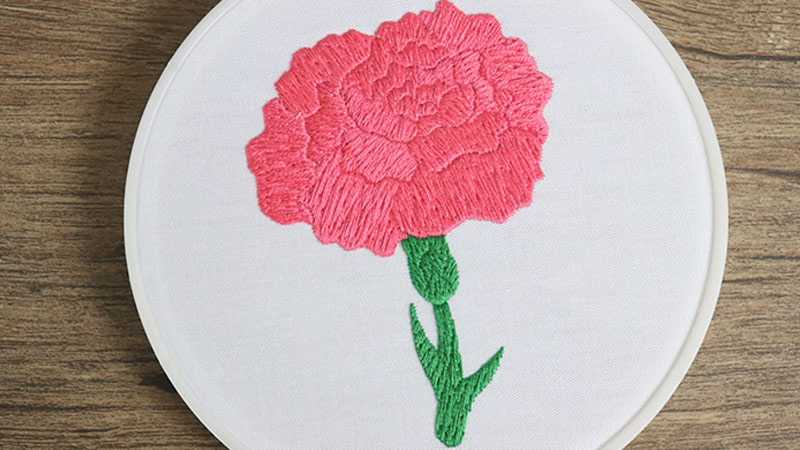
What Is the Strongest Embroidery Stitch?
The most robust embroidery stitch is the backstitch. It surpasses other stitches in durability and resistance to wear and tear.
The backstitch, a variation of the straight stitch, involves stitching backward to create a solid line of overlapping stitches on the fabric’s wrong side.
It’s a fundamental stitch in embroidery and hand sewing, ideal for creating precise outlines, seams, and anchor points for other stitches.
To execute a backstitch, start from the right side of the fabric, pull the thread through, insert the needle backward, and repeat while maintaining even stitches.
Its strength, versatility, and professional appearance make the backstitch a go-to choice for embroidery enthusiasts and seamstresses.
Why Is Strength Important in Embroidery Stitches? Several Reasons
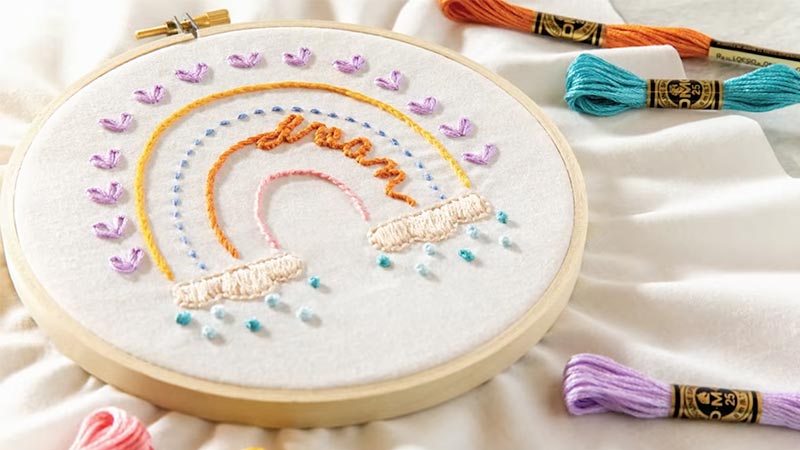
Strength is a paramount consideration for embroidery stitches and plays a vital role in the success and longevity of embroidery projects.
Here are several compelling reasons why strength is of utmost importance in embroidery stitches:
Durability
Embroidered items often face frequent handling, washing, and general wear and tear. The embroidery can quickly lose its luster and fall apart without solid stitches.
Strong stitches ensure the design can withstand these stresses, maintaining its beauty and integrity over time.
Longevity
Many embroidery pieces hold significant sentimental value and are intended to be cherished for years if not generations.
Strength in stitches is essential to ensure that the embroidery remains as beautiful and intact as the day it was created, preserving the memories and craftsmanship for the long term.
Preventing Unraveling
Weak or poorly executed stitches can lead to unraveling, where the thread starts to come loose, potentially causing the entire embroidery to unravel. Strong stitches securely anchor the thread in place, preventing this kind of damage and preserving the design’s integrity.
Professional Appearance
Strong stitches contribute to a polished and professional finish. They create clean lines, prevent loose or messy stitching, and enhance the overall quality of the embroidery work.
This professional appearance is essential, especially when embroidering items meant for sale or display.
Versatility
Strong stitches are versatile and suitable for various embroidery applications. Whether it’s creating intricate outlines, filling in designs, or adding texture, the durability of these stitches allows them to excel in different contexts, making them a valuable choice for embroiderers.
Enhancing Value
Embroidery often adorns items with sentimental or monetary value, such as clothing, heirlooms, or decorative items. Strong stitches protect this value by ensuring the embroidered item remains in good condition.
This can add value to the item and maintain its appeal for collectors and future generations.
How Do You Execute a Backstitch in Embroidery?
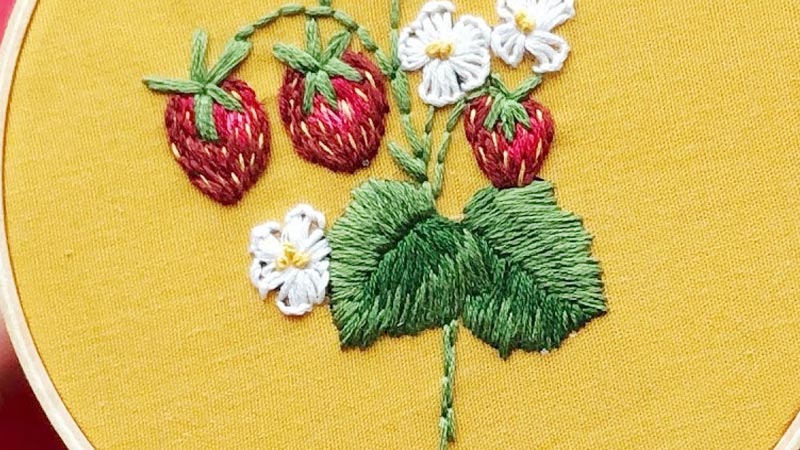
Executing a backstitch in embroidery is a fundamental technique that provides strength and precision to your work.
Here’s a step-by-step guide on how to execute a backstitch in embroidery:
Gather Your Supplies
Before you begin, ensure you have all the necessary supplies, including an embroidery needle and the appropriate embroidery floss or thread in your desired color.
Start from the Right Side
Begin your backstitch from the right side of the fabric where you want to start your stitching. Pull the knotted end of the thread through to the wrong side, positioning it one stitch length to the left of the end of your intended stitching line.
This ensures that the knot is hidden on the wrong side of the fabric.
Insert the Needle Backwards
Insert your needle back into the fabric at the end of your stitching line. As you pull the needle through, ensure the thread emerges from the fabric one stitch length ahead of where it initially entered.
This placement should be in the needle’s track’s center on the fabric’s wrong side.
Repeat the Process
After the process, insert the needle back into the fabric at the end of the previous stitch and pull it through again, positioning it one stitch length ahead.
The key to the backstitch is working backward, which creates a continuous line of overlapping stitches. Ensure that your stitches are even and maintain a consistent tension as you proceed.
Complete Your Stitching Line
Keep repeating step 4 until you reach the end of your intended stitching line. The backstitch allows you to create a neat, continuous line that is strong and resilient.
It’s ideal for creating precise outlines and adding strength to your embroidery work.
Secure the Thread
To prevent the thread from coming undone, it’s essential to secure it properly. You can do this by making a small knot or running the thread under some of the previous stitches on the wrong side of the fabric. This secures the thread and ensures that your backstitches remain in place.
What Are the Advantages of Using the Backstitch in Embroidery?
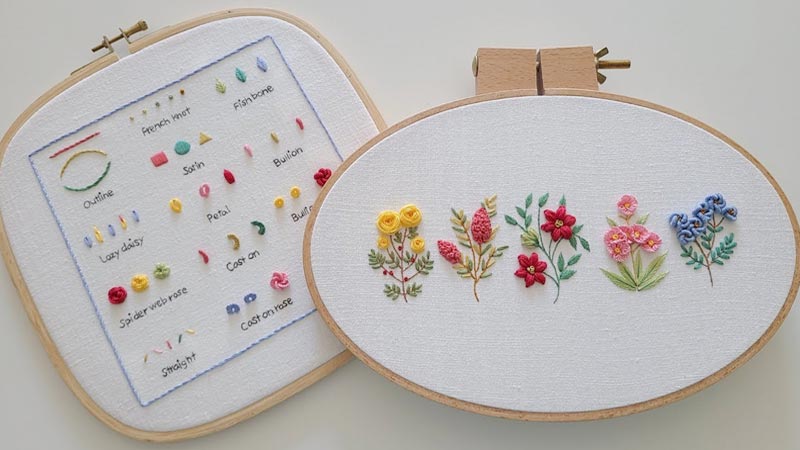
The art of embroidery offers myriad stitches, each with unique characteristics and applications. Among these, the backstitch is a dependable and versatile choice, providing advantages that make it a favorite among embroiderers.
Here are some key advantages of using the backstitch in embroidery:
Strength and Durability
The backstitch is renowned for its exceptional strength. Its overlapping pattern creates a solid and secure line of stitching that can withstand wear and tear, making it perfect for outlines and seams in embroidery projects.
This durability ensures the embroidery remains intact, even with frequent use or washing.
Precision and Control
The backstitch allows for precise and controlled stitching. It’s ideal for creating sharp, straight lines and fine detailing in embroidery.
The ability to maintain even stitches and control the tension of the thread contributes to a professional and polished appearance.
Versatility
The backstitch is incredibly versatile. It can be used for various applications, including outlining designs, creating decorative borders, sewing seams, and anchoring other decorative stitches. Its adaptability makes it a valuable stitch in the embroidery toolkit.
Professional Appearance
Backstitches contribute to a neat and professional look in embroidery. The solid lines they create enhance the overall aesthetics of the design, ensuring that the finished project appears clean and well-executed.
Longevity
As a strong and durable stitch, the backstitch helps maintain the longevity of your embroidery work. This is particularly important when embroidering items such as heirlooms or clothing for years or even generations.
Versatile Thread Use
Backstitches can be created with various thread types, from standard embroidery floss to thicker threads. This versatility allows you to adapt the stitch to suit your project and achieve different textures and effects.
Ease of Learning
While embroidery offers a wide variety of stitches, the backstitch is relatively easy to learn and control, making it suitable for both beginners and experienced embroiderers. Its straightforward technique and consistent results make it a dependable choice.
Critical Considerations for Strong Embroidery Stitches in DIY Projects
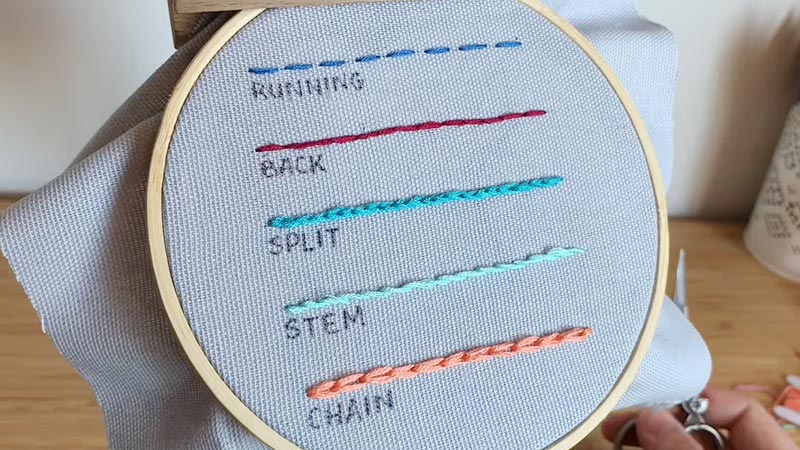
Creating strong embroidery stitches in DIY projects is essential to ensure the durability and longevity of your handcrafted pieces.
To achieve this, several key considerations should be taken into account:
Thread Selection
Opt for high-quality embroidery thread designed for strength and colorfastness. Choose threads suitable for your project’s requirements, such as embroidery floss for intricate work or heavier threads for added strength.
Thread Thickness
Consider the thickness of the thread in your fabric and design. Thicker threads tend to be stronger, but be mindful of their compatibility with your chosen fabric and design intricacy.
Needle Choice
Select the appropriate embroidery needle for your chosen thread and fabric. Needles with larger eyes work well with thicker threads, while finer needles are ideal for delicate fabrics and threads.
Fabric Selection
Begin with a robust and sturdy fabric that can endure the stitching process and withstand everyday wear and tear. Fabrics with tight weaves, such as cotton or linen, are often good choices for durability.
Stitch Type
The choice of stitch matters. For outlining and creating seams, the backstitch is a reliable option. For filling in designs and adding strength to larger areas, the satin stitch can provide both durability and a smooth finish.
Tension Control
Consistent tension is crucial. Stitches that are too loose or tight can compromise the strength of the embroidery. Practice maintaining even tension to achieve solid and uniform results.
Knots and Starts
Secure your thread at the beginning and end of each stitch or thread length. Knots or running the thread under previous stitches on the wrong side can prevent it from coming loose over time.
Reinforcement
In areas subject to high stress or frequent handling, consider adding extra passes of thread or additional backstitches to reinforce the embroidery and increase its strength.
Finishing Techniques
Proper finishing techniques are essential. Ensure that your finished embroidery is framed, mounted, or used in a way that doesn’t subject it to undue stress. This can significantly extend the life of your work.
Cleaning and Care
If your embroidery is likely to require cleaning, familiarize yourself with the appropriate cleaning and care methods to preserve the stitches and colors without causing damage.
Practice
Building expertise and achieving strong embroidery stitches often comes with practice and experience. Be patient with yourself as you refine your skills, and consider practicing on scrap fabric before starting your main project.
FAQs
Are there other strong embroidery stitches besides the backstitch?
Yes, several strong embroidery stitches include the satin stitch for dense coverage, the split stitch for durability with a textured look, and the chain stitch for a versatile hold.
Do different fabric types require different strong stitches in embroidery?
Yes, fabric type influences stitch selection. Strong, tightly woven fabrics, like denim, may require fewer backstitches for strength compared to delicate fabrics that demand gentler options.
How can I prevent distortion of fabric when using strong stitches in embroidery?
To prevent fabric distortion when using strong stitches, use a suitable stabilizer or hoop to support the fabric. Maintain consistent tension and avoid pulling the fabric too tightly.
Can I use the backstitch for fine and delicate embroidery work, or is it primarily for strength?
The backstitch can serve fine and delicate embroidery, offering precision and strength. Its adaptability makes it suitable for intricate designs.
How can I strengthen weak stitches in my embroidery project?
To strengthen weak stitches in embroidery, carefully rework them by stitching over the weak area multiple times, securing the thread and reinforcing the overall integrity of the design.
To Recap
In the intricate world of embroidery, where every stitch tells a story, choosing the most robust stitch is not merely a technical decision but an artful one.
As we conclude this exploration, the backstitch emerges as the epitome of strength and resilience. Its ability to endure time’s passage, frequent handling, and wear and tear make it an invaluable asset in embroidery.
Whether used to outline a cherished design or create the foundation for an intricate masterpiece, the backstitch not only adds durability but also ensures that the beauty of this enduring craft continues to grace our lives, generation after generation.
Leave a Reply